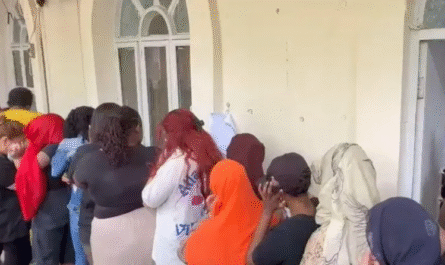🌟 A Golden Opportunity for Workers’ Children
In a landmark move, Chief Minister Maryam Nawaz Sharif unveiled an ambitious plan to offer free higher education plus dormitory accommodations to the children of registered workers in Punjab. This bold initiative—one of the most progressive of the current government—is set to reshape the province’s social and educational landscape .
What the Policy Includes
The program covers:
- Completely free college to university education at institutions such as the University of Central Punjab and University of Bahawalpur, offered across over 400 college campuses
- Free hostel and transportation facilities throughout the academic period .
- Eligibility: Children of workers certified by the Punjab Workers Welfare Fund, with a minimum of three years employment (and social security/EOBI coverage), in enterprises registered with the Punjab Group of Colleges .
Bridging a Long-Standing Gap
For decades, the children of laborers in Pakistan have struggled to access higher education due to financial constraints. While primary education initiatives have seen gradual success, the costly leap from college to university has remained out of reach for many working-class families. By covering not just tuition, but also living costs and commuting, this program remedies a deep-rooted barrier. It’s more holistic than merit-only scholarships—it’s about giving opportunity to those who were systematically excluded.
More Than Just Education
This initiative dovetails with CM Maryam Nawaz’s broader reforms. Her “Honhar Scholarship” program alone covers 30,000 students per year across 65 universities and 359 colleges, extending to private university students for the very first time Yet the workers’ children program goes further—it targets a specific socio-economic class that often falls through the cracks.
A Versatile, Inclusive Boost
- Merit meets equity: Even workers’ children with fewer resources can now compete academically and benefit from quality education.
- Comfort & safety: Free dorms and transportation mean students aren’t forced into unsafe or disruptive housing arrangements.
- Region-wide impact: By being available on 400 campuses, the program isn’t Lahore-centric; it spans urban and rural areas alike, ensuring fair access for workers across Punjab.
Transformative Social Impact
- Social mobility: Breaking the generational poverty cycle—where parents toil in factories and their children have limited educational chances.
- Economic stimulus: Educated workers’ children enter the labor force with improved skills, fueling economic growth from the grassroots.
- Community uplift: As one student graduates, the entire family benefits emotionally and financially, creating long-term ripple effects.
Synergy with Broader Reforms
This initiative is part of a multi-pronged strategy under CM Maryam, which includes:
- The flagship Honhar Scholarship program covering 120,000 students over four years .
- Investment in infrastructure—such as transport buses, upgraded school libraries, and early childhood centers ..
- Technical education and skill development in key sectors like plumbing, nursing, and IT—benefiting both workers’ children and the broader workforce.
By weaving these efforts together, Punjab is not only improving access but is strategically building a future-ready human capital pipeline.
Ensuring Transparency & Meritocracy
Trust in government programs hinges on fairness. In the Honhar Scholarship, the CM emphasized 100% online, transparent applications, with multi-tier vetting systems involving institutional, provincial, and oversight committees . We can anticipate similar rigor for the workers’ children scheme.
Furthermore, with 60% female reservation in scholarships and a strong focus on merit, the initiative also promotes gender equity—ensuring male and female students from working-class backgrounds benefit equally.
Why It Matters in 2025 & Beyond
- COVID aftermath: The pandemic disproportionately affected families relying on wage labor. Supporting their children’s education aligns with global recovery efforts.
- Digital age readiness: The government’s wider push—like laptop distribution and IT skill-building—means these students aren’t just graduating; they’re graduating with skills for tomorrow’s economy
- Youth bulge: With a youthful and growing population, Pakistan must harness its human capital. Investing in workers’ children ensures inclusion, not division, in national development.
Watching the Implementation
To be transformative, the program must deliver on these fronts:
- Awareness: Clear communication to all worker communities, including those in far-flung tehsils.
- Accessibility: Simplified applications, local help desks, and transparent timelines.
- Monitoring: Robust systems to prevent misuse—like verifying workers’ status and tracking student progress.
- Accountability: Regular public reporting on enrolment, dropout rates, gender and regional distribution, and educational outcomes.
A Story of Hope
Imagine:
- A factory worker in Multan—with just three years on the job—sees her daughter accepted into UCP, with full tuition and dorm fees covered.
- A bus mechanic in Gujranwala whose son studies nursing at UBAS, commuting free every day.
- A cleaner in Faisalabad whose ambition to be a software engineer is no longer barred by boarding fees or transport costs.
This scheme is not just a policy; it’s a catalyst for dreams—proof that with support, talent everywhere can thrive.
Final Thoughts
The free higher education initiative for workers’ children by Punjab’s government is more than generosity—it’s strategic nation-building. It closes opportunity gaps, uplifts entire communities, and aligns with Punjab’s overarching vision of merit-based, inclusive education. Amid an ambitious reform era, this program stands out as a model for how public policy can empower the underserved—and send a message: in 21st-century Punjab, class should never limit a child’s destiny.



